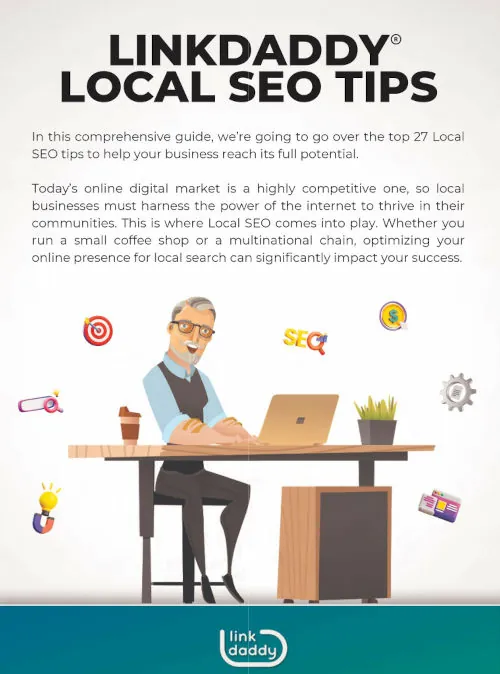
Staying ahead of the curve is imperative for businesses aiming to thrive in the online arena. Google, as the unrivaled titan of search engines, continually evolves its algorithms and features to enhance the user experience and deliver more relevant results. The latest innovation poised to shake up the SEO landscape is Google’s Search Generative Experience (SGE).
Imagine a search engine results page (SERP) that doesn’t just list links but generates dynamic, interactive content tailored to the user’s query in real-time. This is precisely what Search Generative Experience offers—a revolutionary shift from static listings to an immersive, personalized browsing experience. With its impending global rollout and expanded language support, adapting your site to align with SGE’s parameters is no longer optional—it’s imperative.
Welcome to our blog, where we embark on a journey to demystify the intricacies of Search Generative Experience optimization. Whether you’re a seasoned digital marketer or a business owner navigating the complexities of online visibility, our aim is to equip you with actionable insights and strategies to thrive in this new era of search.
Throughout this series, we’ll explore the nuances of Search Generative Experience and dissect the key factors that influence visibility and ranking within this dynamic framework. From understanding the underlying principles of SGE’s operation to implementing tactical optimizations, we’ll leave no stone unturned in our quest to help you harness the full potential of this transformative search experience.
But why is Search Generative Experience optimization so crucial? The answer lies in the shifting behaviors and expectations of modern internet users. In an era where instant gratification and personalized experiences reign supreme, static search results simply won’t cut it anymore. SGE represents Google’s response to this paradigm shift—an innovative solution designed to cater to the evolving needs of users and provide them with richer, more engaging search experiences.
So, whether you’re gearing up for the imminent rollout of Search Generative Experience or simply looking to future-proof your site against upcoming algorithmic changes, join us as we delve into the strategies, tactics, and best practices for navigating Google’s Search Generative Experience. Get ready to unlock the full potential of your online presence and stay ahead of the competition in this dynamic digital landscape.
Understanding the Impact of Search Generative Experience on Search Results
Google’s Search Generative Experience (SGE) isn’t just another algorithm tweak; it’s a seismic shift in how search results are presented and consumed. Gone are the days of static listings—Search Generative Experience heralds an era of dynamic, personalized content that adapts to users’ queries in real-time. But what does this mean for businesses and marketers striving to maintain visibility and drive organic traffic?
Let’s explore how SGE will reshape search results. Traditional SERPs typically display a list of links and snippets, leaving users to sift through the clutter to find what they’re looking for. SGE, on the other hand, goes beyond mere listings, generating interactive modules, visual elements, and even immersive experiences directly within the search results page. From dynamic carousels showcasing product options to interactive maps highlighting local businesses, Search Generative Experience transforms search results into engaging, user-centric experiences.
The implications for click-through rates (CTRs) and organic traffic are profound. With SGE’s emphasis on rich, visually compelling content, traditional blue links may struggle to capture users’ attention. Instead, appearing as a featured resource—whether it’s through rich snippets, knowledge panels, or immersive experiences—is paramount to maintaining visibility and attracting clicks. Businesses that fail to adapt their SEO strategies to accommodate Search Generative Experience risk being overshadowed by competitors who embrace its interactive potential.
Moreover, understanding the importance of appearing as a featured resource is crucial in the SGE landscape. Google’s algorithms are becoming increasingly adept at surfacing the most relevant and authoritative content directly within the search results. By optimizing for featured snippets and other rich result types, businesses can position themselves as go-to sources of information, earning coveted spots at the top of the SERPs and driving valuable organic traffic to their sites.
Key Optimization Techniques for Search Generative Experience Compatibility

As Google’s Search Generative Experience (SGE) becomes increasingly influential in shaping search results, mastering optimization techniques tailored specifically for SGE compatibility is essential for businesses aiming to maintain visibility and competitiveness online. In this section, we’ll delve into some key strategies to enhance your site’s compatibility with Search Generative Experience and increase the likelihood of being featured prominently in its dynamic search results.
Structured data markup emerges as a cornerstone of SGE optimization. By implementing schema.org markup, you provide search engines with clear, structured information about your content, enabling them to better understand its context and relevance. Leveraging schema markup not only enhances the visibility of your content in traditional search results but also improves its chances of being showcased in rich snippets, knowledge panels, and other featured formats within SGE.
Content formatting plays a pivotal role in SGE optimization, as well. Crafting content in a format that is easily digestible and visually appealing enhances its suitability for inclusion in Search Generative Experience’s interactive modules and visual displays. Incorporating elements such as bullet points, subheadings, images, and videos not only enhances user engagement but also increases the likelihood of your content being featured prominently in SGE results.
Semantic SEO strategies also come into play when optimizing for SGE compatibility. By focusing on the context and intent behind search queries, rather than just keywords, you can ensure that your content aligns closely with the needs and interests of users. This involves creating comprehensive, authoritative content that addresses a wide range of related topics and queries, thereby increasing its relevance and authority in the eyes of search engines.
Leveraging Rich Media and Interactive Content
Capturing and retaining user attention is an ongoing challenge, especially in the dynamic landscape of Google’s Search Generative Experience (SGE). As SGE continues to prioritize rich, interactive content, understanding the role of such media in enhancing engagement is paramount for businesses striving to thrive online. In this segment, we’ll delve into the significance of rich media and interactive content within the SGE framework and explore innovative strategies to leverage these elements effectively.
Rich media, encompassing videos, images, infographics, and animations, serves as a powerful tool for captivating user attention and conveying information in a compelling manner. In the context of Search Generative Experience, where visual elements play a crucial role in determining search result prominence, integrating high-quality, relevant media into your content can significantly enhance its appeal to both users and search algorithms. Whether it’s a captivating product demonstration video, an eye-catching infographic illustrating key concepts, or a series of compelling images showcasing your offerings, rich media assets can elevate your content above the competition and increase its likelihood of being featured prominently in SGE results.
Interactive content takes user engagement to the next level, allowing for personalized, immersive experiences that keep visitors actively involved and invested in your site. From interactive quizzes and surveys to dynamic maps and virtual tours, incorporating interactive elements not only enhances user satisfaction but also signals to search engines that your content is valuable and deserving of visibility. By encouraging users to interact with your content, you not only increase their dwell time and likelihood of conversion but also send positive signals to search algorithms, boosting your site’s rankings and visibility in Search Generative Experience results.
Adapting Content Strategies for Search Generative Experience Queries

Content strategies must evolve to align with shifting user intent and query contexts. Understanding how SGE queries differ from traditional search queries is paramount for businesses aiming to maintain visibility and relevance in this dynamic landscape. In this segment, we’ll explore how user intent and query context influence content creation and optimization strategies for Search Generative Experience, and delve into tactics for aligning your content with common SGE queries to improve visibility and user satisfaction.
Unlike traditional search queries, which often consist of concise keywords or phrases, Search Generative Experience queries tend to be more conversational and contextually rich, reflecting users’ natural language patterns and search behaviors. As such, content creators must adapt their strategies to anticipate and address the nuanced intent behind SGE queries, focusing on providing comprehensive, informative content that satisfies users’ informational needs.
One key aspect of adapting content strategies for SGE queries is understanding the importance of context. Rather than simply targeting individual keywords, content creators must consider the broader context surrounding SGE queries, including user demographics, geographic location, search history, and device preferences. By tailoring content to align with the specific needs and preferences of target audiences, businesses can increase the relevance and effectiveness of their content in addressing SGE queries.
Another crucial consideration is the ability to anticipate follow-up questions and provide comprehensive, insightful answers within your content. SGE queries often reflect users’ curiosity and desire for deeper understanding, prompting them to seek additional information or clarification on related topics. By preemptively addressing common follow-up questions and providing in-depth, authoritative content, businesses can position themselves as trusted sources of information and enhance user satisfaction.
Monitoring Performance and Iterating Strategies
Staying ahead of the curve requires more than just implementing optimization strategies—it necessitates ongoing monitoring, analysis, and adaptation. In this section, we’ll explore the importance of implementing robust analytics and monitoring tools to track your site’s performance in Search Generative Experience and discuss the significance of staying agile and responsive to algorithm updates and shifts in user behavior.
Effective monitoring of your site’s performance in SGE begins with the implementation of robust analytics tools that provide valuable insights into key metrics such as organic traffic, click-through rates (CTRs), dwell time, and conversion rates. By leveraging tools like Google Analytics, Search Console, and third-party SEO platforms, you can gain a comprehensive understanding of how your site is performing within the SGE ecosystem and identify areas for improvement.
It’s essential to track specific Search Generative Experience-related metrics, such as featured snippet impressions, knowledge panel appearances, and visibility in interactive modules, to gauge the effectiveness of your optimization efforts. By closely monitoring these metrics over time, you can identify trends, patterns, and areas of opportunity, allowing you to iterate and refine your optimization strategies accordingly.
Equally important is the need to stay agile and responsive to algorithm updates and shifts in user behavior. Google’s algorithms are constantly evolving to deliver more relevant and personalized search results, meaning that optimization strategies that were effective yesterday may not yield the same results tomorrow. By staying informed about algorithm updates, industry trends, and changes in user behavior, you can adapt your strategies in real-time to maintain competitiveness and maximize organic traffic.
Summary

As Google’s Search Generative Experience prepares for global rollout, the urgency to optimize your site for SGE compatibility becomes increasingly paramount. Throughout this exploration, we’ve underscored the critical importance of understanding SGE’s impact on search results and implementing tailored strategies to thrive within its dynamic framework.
From mastering key optimization techniques to embracing rich media and interactive content, every aspect of SGE optimization contributes to your site’s visibility and competitiveness in the digital arena. By adapting content strategies to align with SGE queries and monitoring performance diligently, you not only enhance user satisfaction but also maximize organic traffic and conversions.
In the face of constant evolution and algorithmic updates, staying proactive and responsive is key to maintaining an edge in Google’s SGE ecosystem. As SGE continues to redefine the search experience, businesses must remain agile, continuously iterating their strategies to meet the evolving needs of users and search algorithms alike.
Optimizing your site for Google’s Search Generative Experience is not just a necessity—it’s a strategic imperative. By implementing the insights and strategies outlined in this guide, you can position your site for success in the ever-evolving search landscape. Stay optimized, stay ahead of the curve, and seize the opportunities presented by Google’s SGE to maximize organic traffic and visibility for your business.
Frequently Asked Questions
Google’s SGE is expected to change the way search results are presented, potentially leading to decreased click-through rates for traditional organic results. Optimizing your site to appear as a featured resource is crucial to maintain visibility and attract traffic in this new search landscape.
Key optimization techniques for SGE compatibility include implementing structured data markup, formatting content for readability and relevance, and employing semantic SEO strategies to enhance your site’s visibility and authority in search results.
Adapting your content strategy for SGE queries involves understanding user intent and query context, aligning your content with common SGE queries, and anticipating follow-up questions to improve visibility and user satisfaction in Google’s new search experience.









